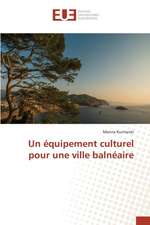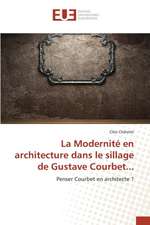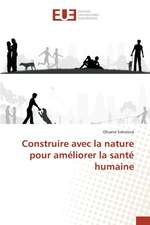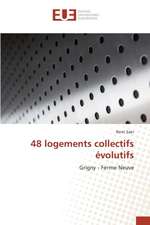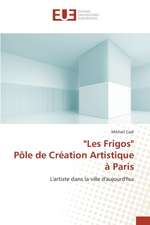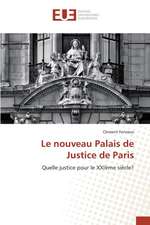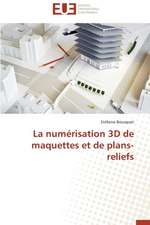Children's Spaces
Editat de Mark Dudeken Limba Engleză Paperback – 19 sep 2005
International examples of innovative childcare practice are illustrated together with the design processes which informed their development. The emphasis here is on new and experimental childcare projects which set-out to reassert the rights of children to participate in a complex multi-faceted world, which is no longer available to them, unless under adult supervision. Research supports in depth recommendations regarding the ideal children's environment, across a range of contexts and dimensions.
Until recent times, the needs of children within the urban environment were largely ignored. There is little tradition and no broadly agreed contemporary architectural or landscape theory as to how children should be provided for, beyond a limited functional agenda.
There is a sense that architecture for childhood is not taken seriously; it is either whimsical and ephemeral or largely designed for adults, an adjunct to the more important business of adult needs and aspirations. Yet children access much of their education and development through play and social interaction with their childhood counterparts. The spaces in and around children"s daycare centres, schools, supervised parks and other dedicated children"s environments are the subject of this collection.
As more and more purpose designed buildings and gardens for children are opened, the need to listen to children and their carers is becoming more aparant. Mark Dudek gathers together a number of internationally recognized experts in the field of childcare environments to write about different aspects of the landscape. They have been chosen in particular because of their background in enquiring, research orientated work, both theoretical and practical. They listen to and watch children.
Contributors have considered the child"s environment as one which is secure and controlled yet offers additional environmental dimensions which extend developmental possibilities. Children often spend a great deal of time in daycare facilties and schools, as parents are absorbed in their own work and leisure activities. This places an emphasis on architects and planners to consider the needs of children in great detail. As such, the children"s environment must be conceived of as a rich, complex place; a "world within a world".
We use the word LANDSCAPE in recognition that children do not differentiate between the inside and the outside, private and public; every part of their perception is open to stimulation by a stimulating environment.
| Toate formatele și edițiile | Preț | Express |
|---|---|---|
| Paperback (1) | 360.89 lei 5-7 săpt. | |
| Taylor & Francis – 19 sep 2005 | 360.89 lei 5-7 săpt. | |
| Hardback (1) | 778.72 lei 6-8 săpt. | |
| Taylor & Francis – 17 mai 2016 | 778.72 lei 6-8 săpt. |
Preț: 360.89 lei
Preț vechi: 459.14 lei
-21% Nou
Puncte Express: 541
Preț estimativ în valută:
69.07€ • 71.84$ • 57.88£
69.07€ • 71.84$ • 57.88£
Carte tipărită la comandă
Livrare economică 06-20 martie
Preluare comenzi: 021 569.72.76
Specificații
ISBN-13: 9780750654265
ISBN-10: 0750654260
Pagini: 336
Ilustrații: Approx. 150 illustrations
Dimensiuni: 210 x 280 x 19 mm
Greutate: 0.88 kg
Ediția:1
Editura: Taylor & Francis
Colecția Routledge
Locul publicării:Oxford, United Kingdom
ISBN-10: 0750654260
Pagini: 336
Ilustrații: Approx. 150 illustrations
Dimensiuni: 210 x 280 x 19 mm
Greutate: 0.88 kg
Ediția:1
Editura: Taylor & Francis
Colecția Routledge
Locul publicării:Oxford, United Kingdom
Public țintă
Professional Practice & DevelopmentCuprins
Chapter 1 – Talking and Listening to Children, Chapter 2 – Designing for Play, Chapter 3 – Place Making and Change in Learning Environments, Chapter 4 – The Building as Third Teacher, Chapter 5 – The Classroom is a Microcosm of the World, Chapter 6 – Designing the Classroom of the Future, Chapter 7 - The Schools We’d Like, Chapter 8 - The Electronic Landscape- Mark Dudek, Chapter 9 – Children in the Public Domain , Chapter 10 – Razor Blades and Teddy Bears, Chapter 11 – The Sustainable Schoolyard, Chapter 12 – The Edible Landscape of School
Descriere
This collection of essays is concerned with the experiences children have within the supervised worlds they inhabit, as well as with architecture and landscape architecture.
International examples of innovative childcare practice are illustrated together with the design processes which informed their development. The emphasis here is on new and experimental childcare projects which set-out to reassert the rights of children to participate in a complex multi-faceted world, which is no longer available to them, unless under adult supervision. Research supports in depth recommendations regarding the ideal children's environment, across a range of contexts and dimensions.
Until recent times, the needs of children within the urban environment were largely ignored. There is little tradition and no broadly agreed contemporary architectural or landscape theory as to how children should be provided for, beyond a limited functional agenda.
There is a sense that architecture for childhood is not taken seriously; it is either whimsical and ephemeral or largely designed for adults, an adjunct to the more important business of adult needs and aspirations. Yet children access much of their education and development through play and social interaction with their childhood counterparts. The spaces in and around children"s daycare centres, schools, supervised parks and other dedicated children"s environments are the subject of this collection.
As more and more purpose designed buildings and gardens for children are opened, the need to listen to children and their carers is becoming more aparant. Mark Dudek gathers together a number of internationally recognized experts in the field of childcare environments to write about different aspects of the landscape. They have been chosen in particular because of their background in enquiring, research orientated work, both theoretical and practical. They listen to and watch children.
Contributors have considered the child"s environment as one which is secure and controlled yet offers additional environmental dimensions which extend developmental possibilities. Children often spend a great deal of time in daycare facilties and schools, as parents are absorbed in their own work and leisure activities. This places an emphasis on architects and planners to consider the needs of children in great detail. As such, the children"s environment must be conceived of as a rich, complex place; a "world within a world".
We use the word LANDSCAPE in recognition that children do not differentiate between the inside and the outside, private and public; every part of their perception is open to stimulation by a stimulating environment.
International examples of innovative childcare practice are illustrated together with the design processes which informed their development. The emphasis here is on new and experimental childcare projects which set-out to reassert the rights of children to participate in a complex multi-faceted world, which is no longer available to them, unless under adult supervision. Research supports in depth recommendations regarding the ideal children's environment, across a range of contexts and dimensions.
Until recent times, the needs of children within the urban environment were largely ignored. There is little tradition and no broadly agreed contemporary architectural or landscape theory as to how children should be provided for, beyond a limited functional agenda.
There is a sense that architecture for childhood is not taken seriously; it is either whimsical and ephemeral or largely designed for adults, an adjunct to the more important business of adult needs and aspirations. Yet children access much of their education and development through play and social interaction with their childhood counterparts. The spaces in and around children"s daycare centres, schools, supervised parks and other dedicated children"s environments are the subject of this collection.
As more and more purpose designed buildings and gardens for children are opened, the need to listen to children and their carers is becoming more aparant. Mark Dudek gathers together a number of internationally recognized experts in the field of childcare environments to write about different aspects of the landscape. They have been chosen in particular because of their background in enquiring, research orientated work, both theoretical and practical. They listen to and watch children.
Contributors have considered the child"s environment as one which is secure and controlled yet offers additional environmental dimensions which extend developmental possibilities. Children often spend a great deal of time in daycare facilties and schools, as parents are absorbed in their own work and leisure activities. This places an emphasis on architects and planners to consider the needs of children in great detail. As such, the children"s environment must be conceived of as a rich, complex place; a "world within a world".
We use the word LANDSCAPE in recognition that children do not differentiate between the inside and the outside, private and public; every part of their perception is open to stimulation by a stimulating environment.









